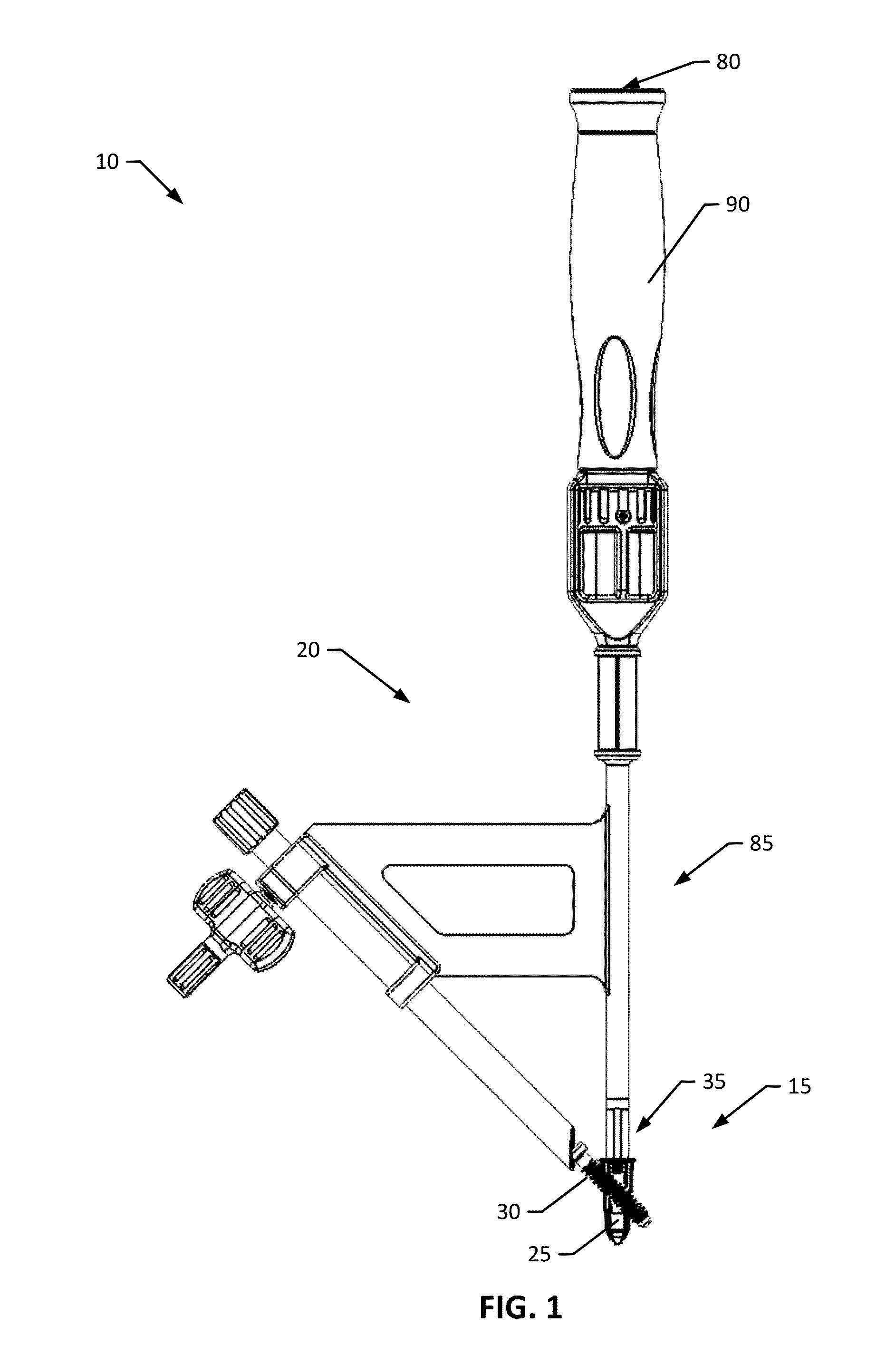However, while each of these methods has been utilized for fixation and fusion of the
sacroiliac joint over the past several decades, substantial problems with respect to the fixation and fusion of the
sacroiliac joint remain unresolved.
A significant problem with certain conventional methods for fixation and fusion of the sacroiliac joint including the
anterior approach,
posterior approach, or
lateral approach may be that the surgeon has to make a substantial incision in the
skin and tissues for direct access to the sacroiliac joint involved.
A danger to
open surgery using the
anterior approach can be damage to the L5
nerve root, which lies approximately two centimeters medial to the sacroiliac joint or damage to the major blood vessels.
Use of trans-sacroiliac and S1 pedicle-
iliac bone implants can also involve the risk of damage to the lumbosacral neurovascular elements.
Damage to the lumbosacral neurovascular elements as well as delayed union or non-union of the sacroiliac joint by use of these procedures may require revision
surgery to remove all or a portion of the implants or repeat
surgery as to these complications.
Another significant problem with conventional procedures utilizing minimally invasive small opening procedures can be that the procedures are technically difficult, requiring biplanar
fluoroscopy of the
articular surfaces of the sacroiliac joint and extensive
surgical training and experience.
Despite the level of
surgical training and experience, there is a substantial incidence of damage to the lumbosacral neurovascular elements.
Additionally, sacral anomalies can further lead to mal-placement of implants leading to damage of surrounding structures.
Additionally, these procedures are often performed without fusion of the sacroiliac joint, which does not remove the degenerative
joint surface and thereby does not address the degenerative condition of the sacroiliac joint, which may lead to continued or recurrent sacroiliac
joint pain.
Another significant problem with conventional procedures can be the utilization of multiple trans-sacroiliac elongate implants, which do not include a threaded surface.
This approach requires the creation of trans-sacroiliac bores in the
pelvis and nearby sacral
foramen, which can be of relatively large dimension and which are subsequently broached with instruments, which can result in bone being impacted into the
pelvis and neuroforamen.
The creation of the trans-sacroiliac bores and subsequent
broaching of the bores requires a guide pin, which may be inadvertently advanced into the
pelvis or sacral
foramen, resulting in damage to other structures.
Additionally, producing the trans-sacroiliac bores,
broaching, or placement of the elongate implants may result in damage to the lumbosacral neurovascular elements, as above discussed.
Additionally, there may be no actual fusion of the articular portion of the sacroiliac joint, which may result in continued or recurrent pain requiring additional
surgery.
Another substantial problem with conventional procedures can be that placement of posterior extra-articular distracting fusion implants and bone grafts may be inadequate with respect to removal of the
articular surface or preparation of
cortical bone, the implant structure and fixation of the sacroiliac joint.
The conventional procedures may not remove sufficient amounts of the
articular surfaces or cortical surfaces of the sacroiliac joint to relieve pain in the sacroiliac joint.
The conventional implant structures may have insufficient or avoid engagement with the
articular surfaces or
cortical bone of the sacroiliac joint for adequate fixation or fusion.
The failure to sufficiently stabilize and fuse the sacroiliac joint with the conventional implant structures and methods may result in a failure to relieve the condition of sacroiliac joint being treated.
Additionally, conventional methods of driving apart a
sacrum and ilium may lead to mal-alignment of the sacroiliac joint and increased pain.
 Login to View More
Login to View More  Login to View More
Login to View More 


